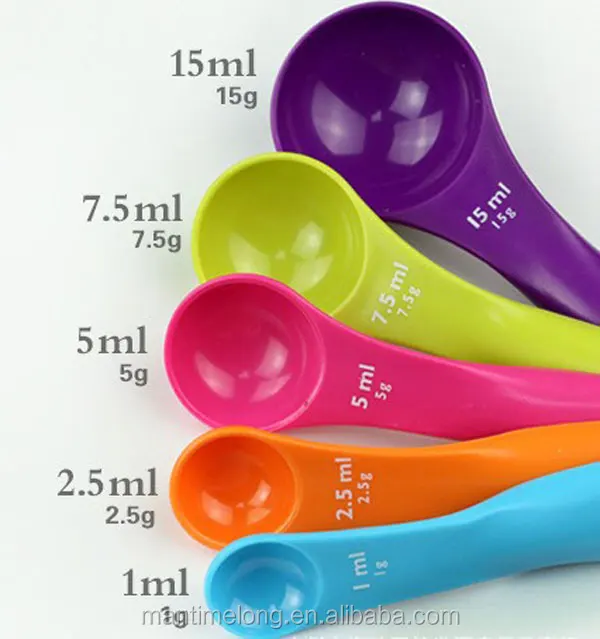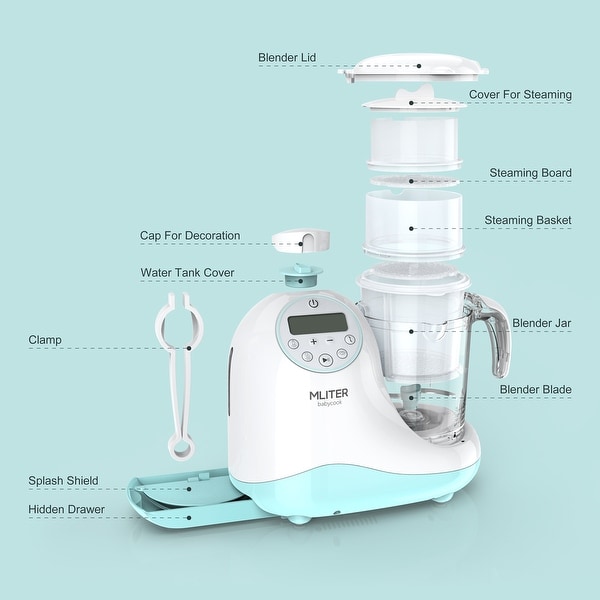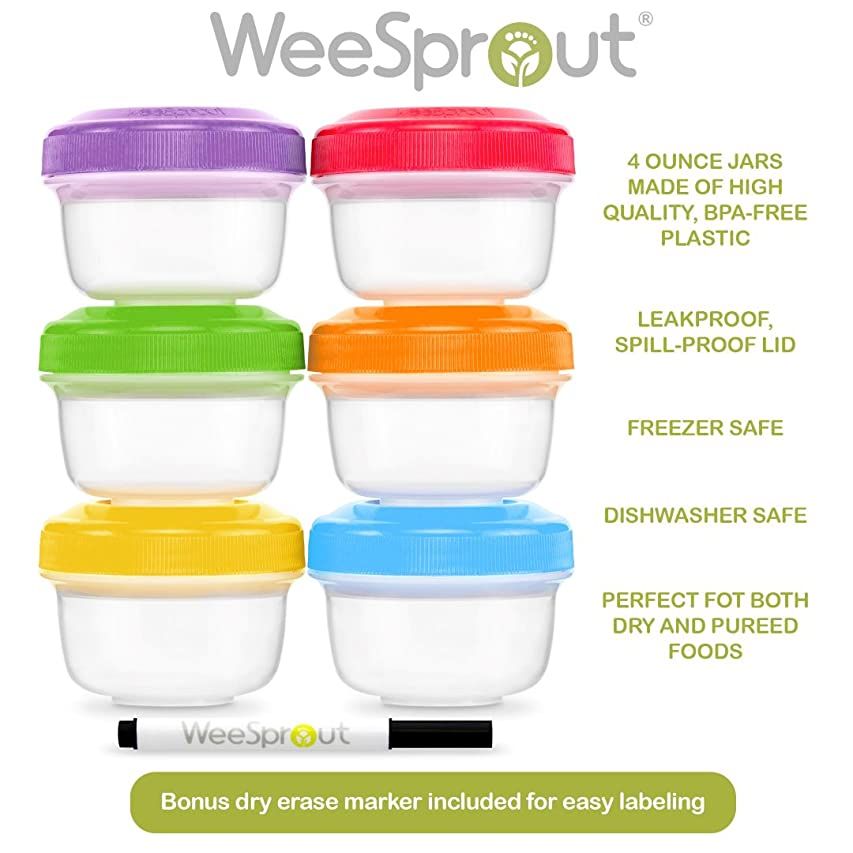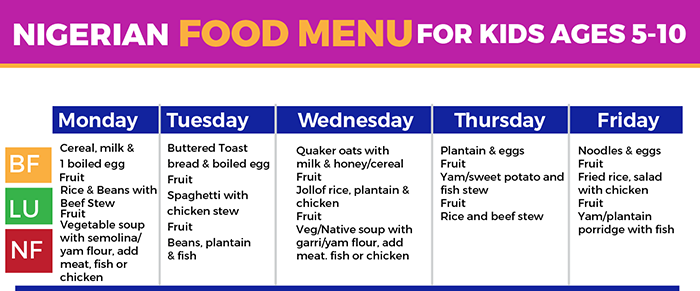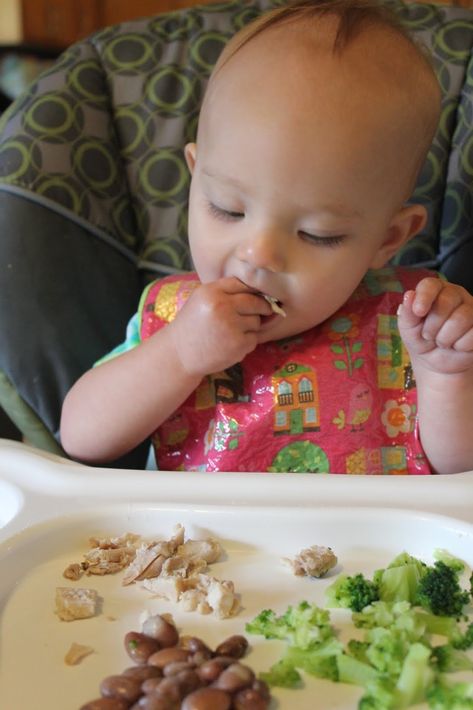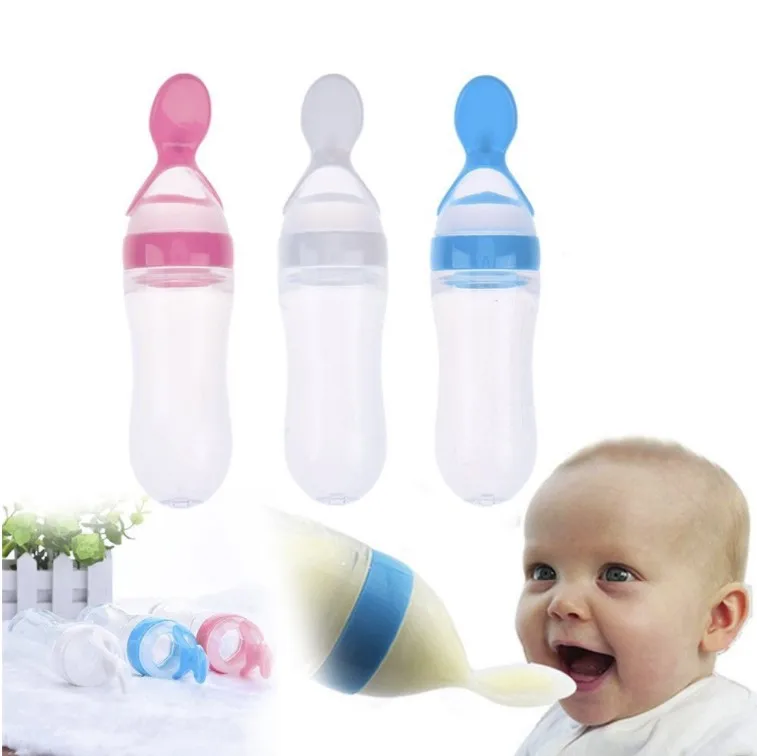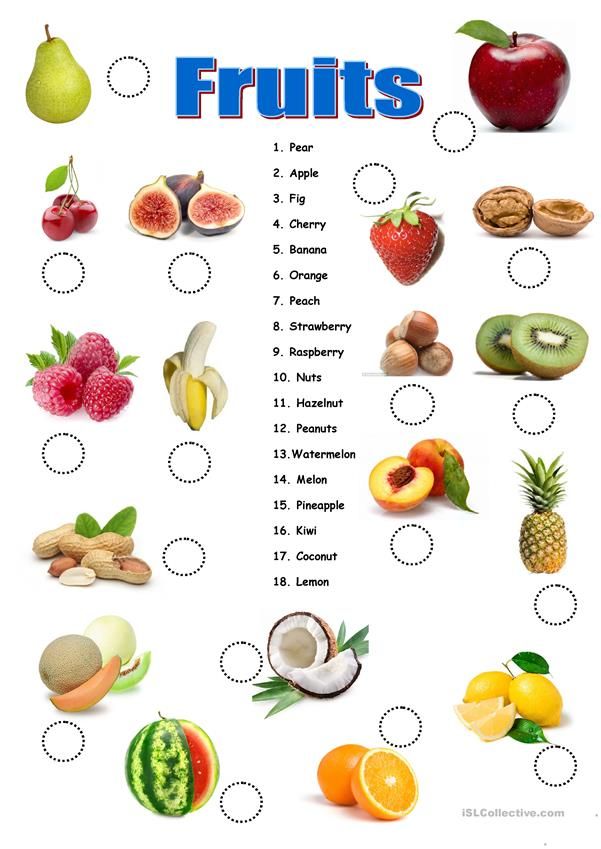What to feed baby budgies by hand
How to Hand-Rear Budgies | Pets on Mom.com
By Karen Mihayloi Duncan Smith/Photodisc/Getty Images
Budgies, or budgerigars, are small Australian parrots. Their natural coloration is light green, though pet industry breeding has created some color mutations. It's best to let the parents raise the chicks, but occasionally the parents will abandon a chick or even the whole clutch. If this happens you must find foster parents for the chicks, or hand-rear them.
The Brooder
Young budgie chicks are kept warm by their mother. Hand-reared chicks require an ambient temperature of about 98 degrees Fahrenheit until their feathers grow in. You'll want a nesting box or brooder for this. Don't clean the nesting box while it contains hatchlings; clean it after the chicks develop feathers.
Formula
Purchase a hand-feeding formula specifically made for budgerigars. Carefully follow the directions on the formula container. Typically you'll mix powdered formula with sterile bottled water that's heated to 103 degrees Fahrenheit. The ratio of water to formula is determined by the age of the chicks. For proper digestion, the formula temperature should be 98 degrees Fahrenheit. Keep the formula warm during feeding by placing it in a bowl of hot water. Never heat the formula in a microwave; hot spots can occur and may burn the chicks. Discard any unused formula after each feeding.
Feeding Technique
Use a small needleless syringe or eyedropper to feed baby budgies. Formula for newly hatched chicks is the consistency of applesauce. Hold each chick in your hand with his back against your palm, supporting his head. Gently insert the dropper tip into the back corner of the chick's beak, and drip the formula into his mouth. Don't overfeed; his crop will fill out, but the skin shouldn't become tight. Don't let the food fill his throat. After feeding, carefully clean inside the chick's beak with a damp cotton swab. Bacterial growth can occur if uneaten food is left inside his beak.
Feeding Schedule
Follow the formula directions for feeding schedules, and allow the chick's crop to empty between feedings. Feed the chicks every 1 to 2 hours, day and night, for the first few days. Gradually increase the times between feedings as your chicks grow. Three-week-old budgies will eat about four times a day. Budgerigar chicks should gain weight every day. For the first two weeks of life, healthy chicks gain 15 percent of their body weight daily.
Feed the chicks every 1 to 2 hours, day and night, for the first few days. Gradually increase the times between feedings as your chicks grow. Three-week-old budgies will eat about four times a day. Budgerigar chicks should gain weight every day. For the first two weeks of life, healthy chicks gain 15 percent of their body weight daily.
Weaning
Provide fresh water, budgerigar seed mix, millet spray and cuttlebone when the chicks are about 4 weeks old. Begin introducing them to fresh fruits and vegetables now. Remove any uneaten produce at the end of the day. Budgies enjoy leaf lettuce, kale, parsley, broccoli and strawberries. Continue offering them formula until they're about 6 weeks old and are eating well on their own.
Fledging
Budgie chicks are fully feathered at around 4 weeks old. They're beginning to explore the world and attempting to fly. They'll sit on perches and flap their wings, exercising the wing muscles as they prepare for flight. Provide a safe place for your budgie chicks to fly. Protect them from windows, fans, poisonous plants and household pets.
Protect them from windows, fans, poisonous plants and household pets.
References
- Cage'n Bird: Hand Feeding - Implements, Method and Technique
- Budgie and Parakeet Place: Budgie Breeding
Resources
- BirdChannel.com: Want to Breed Budgies/Parakeets?
Photo Credits
Writer Bio
Karen Mihaylo has been a writer since 2009. She has been a professional dog groomer since 1982 and is certified in canine massage therapy. Mihaylo holds an associate degree in human services from Delaware Technical and Community College.
Budgie Hand Feeding And Weaning Guide
| Are you considering hand feeding your baby budgies? And even if you are planning on letting your pair raise them, are you prepared to step in and hand feed their chicks should something happen? Here is a guide on some of the basics that you will need to have on hand before beginning this time consuming but rewarding adventure. We have also included is a basic care and feeding schedule that you will need to keep the babies on, and some other helpful information for along the way. |
Please note that we will not be covering specific hand feeding techniques here. This is something that you will need to find an experienced breeder or avian vet for who can show you first hand what to do, and not do. There are many mistakes you can make, and it is easy to kill a chick when done wrong so please consult someone who can show you one on one what to do, and not do, before trying this yourself.
After gathering your supplies and consulting with a breeder or avian vet, please be sure to do as much additional research as you can! There are many things that can go wrong and there is no such thing as being to prepared, their little lives are in your hands when you choose to take on the responsibility of breeding and hand raising. With that being said, lets start on the basics!
The first thing to naturally go over will be the supplies you will need to have on hand to hand feed the chicks, and keep them safe during the process.
There are a number of different brands and options that can also work than the ones mentioned here, just be sure to research other options before hand so you can make a informed decision.
We will suggest our favorite options that we use personally as suggestions for you below as well.
Hand Feeding Formula
| It is important to choose a good formula that will provide all of the nutrients for your growing chicks!. We have used a number of brands including Kaytee Exact, Zupreme Embrace and Roudybush. We were personally very unhappy with Kaytee exact. Not only did it not mix well but it is lacking in probiotics which we had to add after it was mixed, and the chicks seemed to always be hungry on it indicating a lack of the nutrients they needed. |
Zupreme Embrace was an ok formula. It mixed better than Kaytee did, but again we were never really happy with the results and outcome in the chicks with it. Now we use Roudybush formula 3. We are very happy with this formula so far. It is rice based rather than corn like the other 2 brands mentioned before, and the consistency and weight growth of the chicks has been even better.
It mixed better than Kaytee did, but again we were never really happy with the results and outcome in the chicks with it. Now we use Roudybush formula 3. We are very happy with this formula so far. It is rice based rather than corn like the other 2 brands mentioned before, and the consistency and weight growth of the chicks has been even better.
Whatever kind you choose to use be sure that you always check the expiration dates and that it is fresh, and that it is properly stored and mixed correctly following the instructions for the specific brand as they will differ.
Hand Feeding Supplements We Use And Reccomend
Fomula Plus- Hand Feeding Formula Supplement
$7.99
View Details
Hand rearing food additive. Supplement to prevent sickness, maximize growth and feather production in young chicks. Makes weaning far less stressful. Prevents weight loss at weaning.
Key Features: Excellent for supporting young chicks.
How We Use This Product At Our Aviary: We add Formula Plus to our dry hand feeding formula.
Potent Brew- Liquid Pro-Biotic For Birds
$7.99
View Details
A powerful liquid probiotic. Keeps the natural functions of the gut at their best. Can also improve the vigor of breeding animals and supports baby health.
How We Use This Product At Our Aviary:
We use Potent Brew in our hand feeding formula, as well as in our breeding pairs soft food.
Syringes And Spoons
You will need utensils that are easy use, clean and disinfect to feed the chicks each time. What you use is very much a matter of choice in a number of ways, so here are some things to consider and suggestions of what we like to use ourselves.
Some people prefer to use only a syringe while others like using just a bent spoon, and both have their own advantages. We like a spoon because the chick can eat at his or her own individual pace, and it is much harder to aspirate a chick using a spoon than a syringe. Syringes have the advantage of being able to measure how much formula each chick is actually eating, and it also keeps the formula warmer than just a spoon which is exposed to the air and will cool quicker. It is for these reasons that we use a combination of both.
We like a spoon because the chick can eat at his or her own individual pace, and it is much harder to aspirate a chick using a spoon than a syringe. Syringes have the advantage of being able to measure how much formula each chick is actually eating, and it also keeps the formula warmer than just a spoon which is exposed to the air and will cool quicker. It is for these reasons that we use a combination of both.
| The spoons pictured to the right are an example. They are bent spoons which are designed to attach to a lour lock syringe, and can easily be removed to clean and disinfect after each use. Using these provides the ease and safety of feeding with a spoon, with the added benefit of |
Feeding spoons with disposable syringes |
measurement and more steady temperature that the syringe provides.
A normal plastic syringe that you will find in most stores though are not meant for repeated use, and while you can use them in a jam (or if you don't mind constantly replacing them) they will quickly start to get stuck and will need to be replaced to keep a steady and safe flow of formula to the chick.
If you plan on using syringes the best thing to do is purchase ones that are made for repeated use. The link on the left shows the syringes we use. The entire syringe is made to be taken apart for easy cleaning and disinfecting, and will get you years of good use.
A Thermometer
Having a proper thermometer is essential when you are mixing your formula!
The old "testing on your wrist" idea will not work for hand feeding birds, you need a reliable and easy to use thermometer that can be used for each and every feeding.
There are many available so it is a matter of personal preference. A number of the ones that are made for mixing coffee and hot drinks work well, and are small and easy to use like the one pictured to the right.
A Gram Scale
| A good scale will be needed to weigh your chicks daily. An average scale we use for weighing ourselves will not work. You will need a scale that can measure down to the gram given the small size of the babies, and you can easily find a number of inexpensive examples that will do the job in the kitchen section of your local store, or online. These are usually made for measuring food portions. |
Nursery Boxes
| Your chicks will need a safe and easy to clean place to stay before they are fully feathered and ready to move into a cage. For this we use what we call "nursery boxes". These are just small plastic boxes which are a similar size and shape to a nest box. We keep a light towel over 3 sides of each nursery box to hold in added heat as well. It is important that they are not too large if your home stays at a normal temperature and you are not planning on adding an additional heat source |
(see more about this below) because the larger they are the less heat will stay in, and they will not function the same as a nest box would naturally in terms of heat.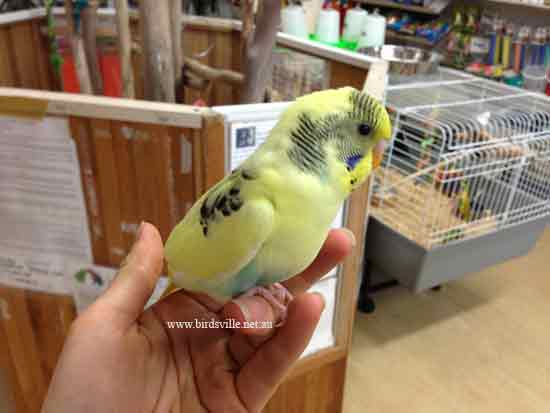
Weaning Cages
|
One of our weaning cages | After the chicks are fully feathered and are becoming more active they will need a safe cage to move to. The "weaning cage" as we like to call them are best if they are shorter and wider in size so that if the chicks fall while learning how to climb and fly they will not hurt themselves. It will need perches of different heights and sizes so they can learn to perch and climb, as well as toys so they can explore and learn how to play while they are not out. |
Each cage will also need a number of shallow dishes for pellets, seed mix, veggies, egg food and a shallow dish for water. In addition we like to keep 2 of the common types of water bottles in the cage for them to learn how to use as well, this way if their new homes would like to use them they are already used to them and know how they work.
So now you have your basic supplies ready for hand feeding, and for the chicks to stay during this time!
Lets now talk a little about hand feeding and weaning schedules so you can have an idea of what to expect and an average timeline of how chick is raised here at our aviary, as well as some dangers to look out for.
When To Begin Hand Feeding
It is very important for the chicks to spend a number of weeks with their mother. Right after they hatch they get essential crop milk from the hen, which is full of antibodies and nutrients that the chicks need to ward off disease until they can develop their own immune system.
During the first few weeks they need fed almost constantly day and night until they grow in size and can fit more food in their crop. They are also very small at first and it is much easier to harm them during the
hand feeding process. Deciding on an age to pull them at is very important for their health and well being, and should not be rushed if you can help it.
|
2-3 week old chicks | Most breeders prefer to begin hand feeding at 2 or 3 weeks of age, and this is mostly a matter of personal preference. Some say that pulling at 2 weeks will make them tamer or more bonded. At 3 weeks you have the added advantage of not needing an added heat source, where as if you decide to begin at 2 weeks supplemental heat can be needed. You can not start any later than 3 weeks though if you want the process to go smoothly, and for the chicks to take to hand feeding the easiest. |
We have pulled babies at both 2 and 3 weeks to compare when trying to decide what we thought was best personally, and noticed no difference or advantage in tameness or bonding when pulling them at 2 weeks instead of 3, and for this reason we prefer to begin hand feeding at 3 weeks.
The Importance Of Formula Temperature
Both in formula and environment, having the correct temperature is essential! Without it the chicks will not be able to digest their food and their digestive system will slow down, or stop working all together.
| Hand feeding formula needs to be at the correct temperature. Too cold and you will have the problems mentioned above, too hot and you will burn the chicks mouth and crop leading to a whole other set of problems. |
A thermometer for formula temperature |
Watch the chicks behavior when you offer the formula. Too hot or too cold will often cause the chick to spit the formula out, or run away. At the correct temperature you should get a good feeding response and the chick should gladly take the formula. Again, having a breeder or avian vet help present for the first few times you hand feed is very wise to make sure you have the method and temperature correct, and this will help you be more confident when you do it on your own.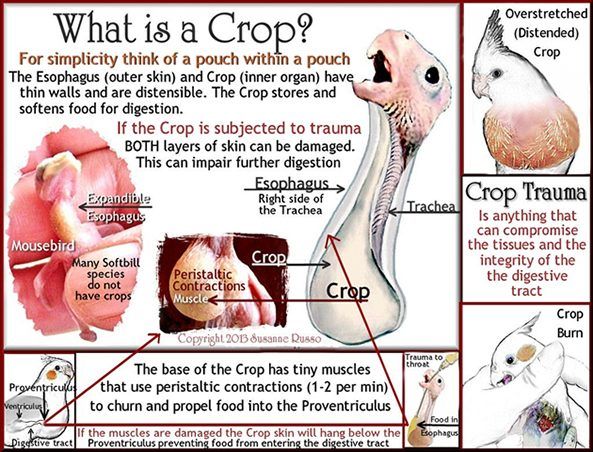
How Often To Feed And How Much
|
3 week old chick being fed | When you first pull the chicks at 2-3 weeks they will need fed every 3-4 hours. Once the chicks are 4 weeks old you can begin feeding them every 5 hours, and this is the schedule you will want to keep until they wean themselves. The only break you will want to make in this routine is 8 hours or so at night for the crop to completely empty. It is essential that their crop completely empties at least once every 24 hours. |
From 2 weeks of age you can slowly increase the amount of formula depending on the chicks size and specific age. For example your average pet/wild chick at 2 weeks will eat 2-3ml, at 3 weeks 4-5ml and 4 weeks 5-6ml and from there on out until they wean. A larger english/show chick will naturally eat a bit more considering their larger size. At 2 weeks they will generally need 3-4ml, at 3 weeks 5-6ml and from 4 weeks to weaning 7-8ml. Again these are just averages so please be sure to check each chick individually when trying to find the perfect amount for him or her.
Again these are just averages so please be sure to check each chick individually when trying to find the perfect amount for him or her.
| It is very important to know when to stop feeding because you can not trust that the chick will always stop when they should. While feeding gently feel the chicks crop. When it is at just the right amount the crop should be slightly firm but still have pleanty of give to it. When it is too full it will get harder and will have little to no give. |
Do not over feed. When the crop gets too full the muscles that help the crop contract and push the food up and into the stomach are weakened, causing them not to work properly. When these muscles to not function like they should a chick can easily starve to death with a crop full of food. In this case an avian vet will be needed to help these muscles work properly again. Please be very careful not to over feed, and ask an experienced breeder or avian vet to show you what is the ideal amount looks and feels like so you will be confident in knowing when to stop.
Weaning Methods
| When you decide to hand feed it is important to understand what is involved in weaning the chicks, and what most breeders do to accomplish this. There are 2 basic options in trying to help your chicks to wean: Force weaning, and abundance weaning. What are the differences? |
Force Weaning: This method involves removing hand feedings from the chicks whether they are feeding themselves completely or not. The idea behind this method is that if the chicks are hungry they will start feeding themselves faster, speeding up the weaning process.
Abundance Weaning: With this method you do not remove a feeding from their schedule unless they are feeding themselves and they decide they do not want a feeding. The idea behind this method is to offer the chicks as much of a variety of food as possible, encouraging the chicks to try new things by keeping an abundance of food within beaks reach at all times.
We personally only believe in using the abundance method of weaning at our aviary. In our experience if you try to force a baby to wean you actually move them in reverse of weaning and can cause all sorts of emotional and physical problems. Not only does the baby feel abandoned and unprepared to care for itself, but they have a very high metabolism and can not afford to be hungry for long. A hungry baby is not going to be curious and try new foods, but instead is going to keep begging for food from the breeder and make little to no progress in weaning themselves. On the other hand a full and content baby is one that will want to explore and try new things, and this is what we need for them to wean and what abundance weaning is all about.
It is if course your choice what method you choose to use, but please consider the expectations and consequences of both carefully when trying to decide what is best for the chicks.
Preparing The Chicks To Wean
| At 2-3 weeks of age the chicks will start becoming more active, exploring their limited enviornment as much as they can. Be very careful when putting any food source in a nestbox or nursery box. Keeping the box |
Egg food with pellets sprinkled on top |
While the chicks are in the nursery boxes you can begin offering sprays of millet for them to nibble on. It can take quite some time for them to learn how to crack seeds sucessfully, and beginning to offer them at a young age will help their progress later.
As they get older and are able to move into a weaning cage, the key is to give them a great variety of different foods to try and abundance wean them. Generally speaking the more variety you give them the faster they wean, and always remember that a hungry baby will not want to try new food. Make sure they are full and content, especially right before you give them new fresh food to try!
Make sure they are full and content, especially right before you give them new fresh food to try!
It amazes me that when I feed my babies and you think they must be as full as they can be after a hand feeding they go right to the pellet or other food bowl to try anything they can get their beaks on. Just keep giving them lots of different food such as pellets, veggies, hard boiled eggs, fruits and millet sprays and keep working with them! They catch on very fast and soon they will be refusing to eat the hand feeding formula all together. They are very smart and learn fast especially with other siblings to explore and try new things with
Average Weaning Age And Late Weaning
| Most babies usually will wean around the 6 weeks of age, but each baby is an There will always be those few ornery little ones that have not read the "average budgie weaning" guide, and follow it as we might expect. |
average despite our best efforts to encourage them to wean. Some babies just take longer than others, there is nothing that is done different with them than their siblings they just move at a slower pace.
With these babies it is important to be patient and continue a good feeding routine until they are ready to take care of themselves. It is natural for a chick to want to be independent, and all it takes is a little extra help and patience and these little ones will soon be weaned too!
When They Are Ready For New Homes
| After weaning it is important that they have at least a couple of weeks after this to spend time with their siblings. It is during this time that is also important to continue working on basic training like stepping up and how to be gentle with hands to make things easier for their new owners. It is only after this when they are 8-10 weeks old depending on when they wean that they are ready to go to their new homes. |
Denying them this time after weaning and letting them leave too early will greatly increase the chances of a nervous and insecure baby, which will turn into a nervous and insecure adult. Going to a new home should not be rushed if you want the best transition for the baby and the new family.
Keeping Chicks At The Right Temperature
| For the chicks to stay healthy they need to be kept in a place that is the correct temperature for their age. Too hot or too cold will easily kill a chick if not corrected. You will need to take into consideration your climate, the average temperature of your home and the age of the chicks to decide whether you can use nursery boxes or will need a brooder. From 2-3 weeks, the chicks need to be kept at at about 80-85 degrees fahrenheit. |
If you keep your home at 70-75 degrees nursery boxes can work very well since the inside of the boxes will be about 10 degrees warmer than the outside air, just like a nest box normally would be so long as you keep your chicks with at least one other nest mate to snuggle with. If your home is at a colder temperature, or you are keeping a chick on their own, you will need an added heat source or brooder until they are fully feathered. Once the chicks are fully feathered (if your room is kept at the average temperature mentioned above) they will be fine to not have any additional heat. As the chicks mature you can make a transition to other temperatures if needed as long as you make it a slow transition if they are used to more heat. A sharp drop in temperature should always be avoided for any bird, and especially so for a chick.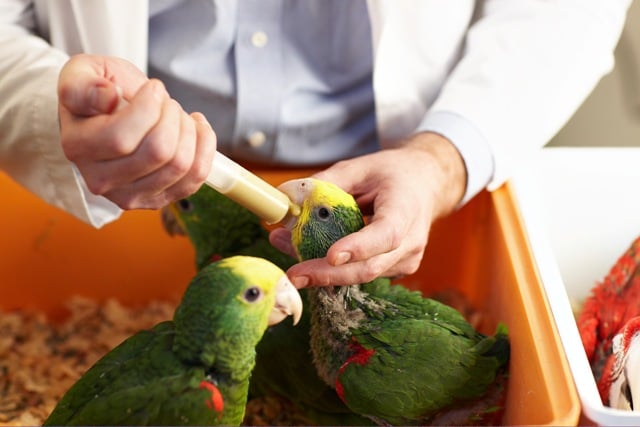
Keep an eye on their behavior, babies that are too cold will huddle together and will be fluffed up, if they are too hot they will hold their wings out from their body and pant trying to cool off. A baby that is just the right temp at about will be active and exploring their surroundings, not huddled up or listless unless they are sleeping or just got done eating. We always keep 3 sides of our nursery boxes covered to keep them safe from drafts, and make them feel more secure too.
Cleanliness Is Essential
|
4 1/2 week old chicks | Other than diet, cleanliness is what has the biggest impact on the health of your chicks. Nursery boxes and cages need to be kept clean at all times, because the chicks will constantly be putting in their beak and eating anything and everything on the floor and in food and water dishes. Pellet and seed mixes need to kept fresh and free of droppings too, and since many chicks tend to enjoy sleeping in their food dishes and playing in them this in itself can be quite the challenge! |
Fresh foods including veggies and egg food can only be left out for a couple of hours before spoiling.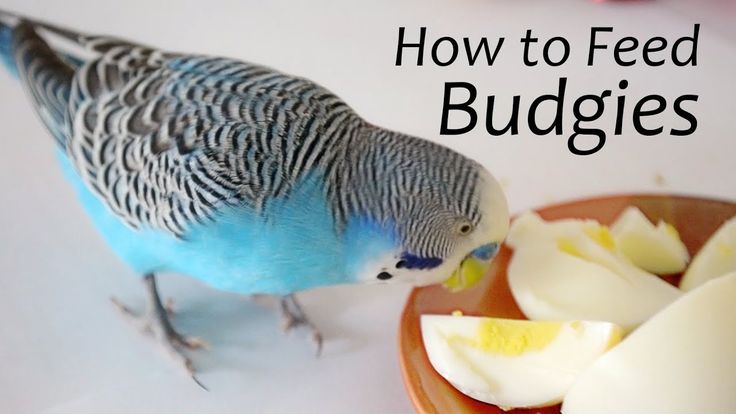 Hand feeding formula is a breeding ground for bacteria and dries very quickly, so immediately after each feeding is the best time to clean everything so it is ready for the next time. All utensils including syringes, spoons and thermometers will need to be taken apart as best as possible and cleaned and thoroughly disinfected.
Hand feeding formula is a breeding ground for bacteria and dries very quickly, so immediately after each feeding is the best time to clean everything so it is ready for the next time. All utensils including syringes, spoons and thermometers will need to be taken apart as best as possible and cleaned and thoroughly disinfected.
The chicks themselves will need to be gently cleaned after each and every hand feeding as well. Especially in the beginning before they get the hang of the spoon they can make quite the mess of themselves! Warm water and a soft washcloth will easily remove formula. Again though it is very important to clean them up as soon as you are done with the feeding. Leaving it for any period of time not only make it much harder to get off once it dries, but it will allow bacteria to grow and can cause stunted growth and beak deformities that are hard if not impossible to reverse in some cases.
What Healthy Chick Should Look Like
| The best way to keep an eye out for potential problems with your chicks is to know what a healthy, happy chick should look like. A healthy chick should have bright and clear eyes. They will have a clean well shaped beak with the top neatly fitting into the bottom. By a few weeks they should have a nice amount of down and pin feathers that gradually come out of the sheaths. |
A healthy 3 week old chick |
Most well fed and healthy chicks should be fully feathered by 4- 4 1/2 weeks of age.
Cleanliness in the nest box and nursery cages, and proper perches in the weaning cages should be obvious with smooth well shaped legs, feet and toes. The vent and tail should be clean and free from stains or droppings.
The keel bone (chest bone) of a chick that is a healthy weight should not be sharp or sticking out, but rather there should be well defined muscle on each side with the keel bone barely being felt.
Weight Gain
|
3 english budgie chicks at 3 1/2 weeks | There is no specific number of grams for every chick at any given age. Each baby in a clutch can, and often will, weigh different daily even being raised on the same diet. Genetics plays the biggest roll in determining how much a baby will weigh, as will having a good diet so they to reach their full potential of course. For example, what will be considered a normal baby weight at 3 weeks for a wild type budgie chick will be completely different than for a english budgie chick of the same |
age. Most chicks range from 20-80 grams generally speaking from 3 weeks to weaning. How much each one should gain every day will vary as well. When you keep this in mind you won't unnecessarily worry yourself if a chick does not hold up to an expectation that for his or her genetic background or size would not normally call for.
The most important things are that they are gaining weight or every so often maintaining their weight, and that you know what a healthy chick should look like for his or own specific size as was described above. Most chicks will continually gain each day and not loose it up until the weaning point. During this time some weight loss is normal, but not extreme loss.
Warning Signs
| Here are some common (but not all) warning signs to look for that indicate something wrong with a chick. All of these signs are serious, and most will require an avian vets expertise and hands on experience to properly diagnose and treat if needed. If you notice any of these signs, please make an appointment as soon as possible for a check up to see the cause and what can be done to treat the problem. |
Lethargic or constantly sleeping: A chick that constantly sleeps and is inactive is a sign that something is wrong. Chicks will naturally sleep more the younger that they are, but they should still be alert and explore at feeding and playing at regular times throughout the day.
Chicks will naturally sleep more the younger that they are, but they should still be alert and explore at feeding and playing at regular times throughout the day.
Slow feather growth: Proper feather growth is one sign that a baby is developing normally, so when this is stunted it is always a cause for concern. There are a number of things that can cause slow feather growth from a virus or bacterial infection, to incorrect formula and feeding amounts. Your avian vet will be able to help figure out what is causing it.
Crop not emptying: A chick that is not digesting its food properly is in great danger of starving quickly, in addition to the spoiled food that has be sitting in its crop for too long that can go bad causing a number of other problems. A slow crop can be caused by feeding an incorrect temperature of formula, chilling a chick so that its digestion is slowed, or a viral, bacterial or yeast infection among other things.
Loose droppings: This often is a sign of some kind of internal viral or bacterial infection.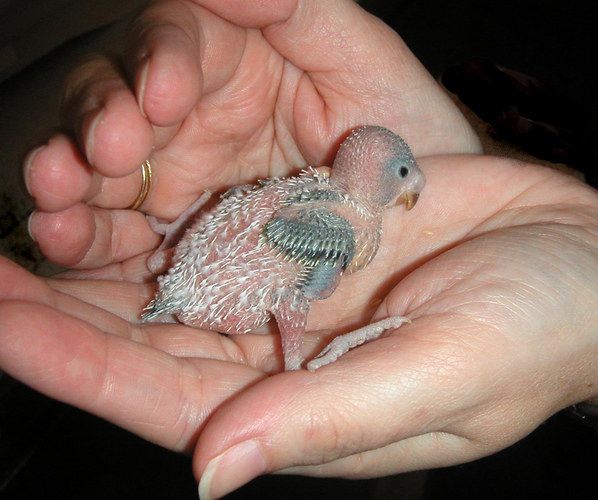 Be sure to check with your avian vet if you notice this in your chicks. Too much water in their hand feeding formula can cause excess urine in the droppings, but it should correct itself with the proper portioning of water and formula for the chicks age.
Be sure to check with your avian vet if you notice this in your chicks. Too much water in their hand feeding formula can cause excess urine in the droppings, but it should correct itself with the proper portioning of water and formula for the chicks age.
Chicks constantly begging for food: This is a sign that a chick is not getting the nutrients that it is needing either in amount or variety. A full chick should be content to explore, play and sleep peacefully. In this case carefully consider what you are feeding, how much you are feeding, and how often.
Losing weight before weaning: Budgie chicks should maintain, or gain weight every day up until they start weaning. If a chick is losing weight it is usually a sign that it is fighting an infection of some kind, or not getting adequate nutrition. Be sure to check with your avian vet right away to see what is causing it.
What to feed budgie chicks?
After birth, budgerigars are defenseless, they are completely dependent on their parents. The female feeds and pays attention to each of them, despite the number of offspring and their age difference.
The female feeds and pays attention to each of them, despite the number of offspring and their age difference.
In the beginning, feeding of babies consists of regurgitation by the female of crop milk, which is located in the gizzard. This "milk" is not one substance, it is a yellowish mucus, consisting of very small, almost liquid pieces of food and protein-rich crop milk. A few days after the birth of the chicks, partially digested grain from the goiter is mixed with the "milk". nine0003 Photo: parrots4life
Thanks to sprouted grains in the diet of a lactating female, she produces a sufficient amount of crop milk.
Later, as the parrots mature, the older ones are transferred to grain feed. Since the grain is in the crop, the female feeds the grown chicks first, and when the grain runs out, the crop milk goes to the smallest in the family.
Photo: Bika During this period, the male constantly provides the female with everything she needs, as she can leave the nest only in the morning and evening, and even then not always. Sometimes the male helps the female and participates in feeding. He also processes grain feed in the goiter, like the female. Thanks to this, the digestive system of budgerigar chicks works like clockwork, they get the most nutrients, vital enzymes and boost their immunity. nine0003
Sometimes the male helps the female and participates in feeding. He also processes grain feed in the goiter, like the female. Thanks to this, the digestive system of budgerigar chicks works like clockwork, they get the most nutrients, vital enzymes and boost their immunity. nine0003
Having flown out of the nest for the first time, young parrots most often remain under the care of the male, as the female is going to the second clutch.
The nutritional value of the parents depends on the owners. It is very important to add and exclude certain products in time.
Feeding a young couple during breeding can be found here.
It happens that breeders have to take on the role of parents of chicks.
Contents
- 1 Reasons for artificial feeding of budgerigar chicks:
- 2 Heating of budgerigar chicks
- 3 There are several options for feeding budgerigars:
- 4 How often to feed budgerigar chicks
Reasons for artificial feeding of budgerigar chicks or failure5: 9003 9003 parents;
- disease of a chick requiring its immediate separation from the feathered family;
- quarantine;
- lack of appetite in the chick, its inability to feed on its own; nine0003
- death or illness of parents;
- a large number of chicks, parents can not cope;
- the female is going to the second clutch and her offspring interferes with her.
The safe period without food for a newly hatched chick is 12 hours.
This is how long a female can go without feeding her baby. And, in case of a non-standard situation, you should count on this period of time to have time to prepare.
You can offer the chick to another pair or offer the male to feed it. Sometimes the bird accepts the baby and thus takes care of him. But it happens that only you can save the situation. nine0003 Photo: ddie gunn
Also, the female is often going to re-lay, her attitude towards the babies may change and you will need to look for additional housing for the young as soon as possible. More often this happens when the chicks are already able to feed on their own, but it happens that the female shows unmotivated aggression early and you need to save the parrots very quickly.
If your chick is only a few days old, you can feed only with a special factory-made syringe or a homemade tool. To do this, you will need a 5 ml syringe and a tube that plays the role of a catheter.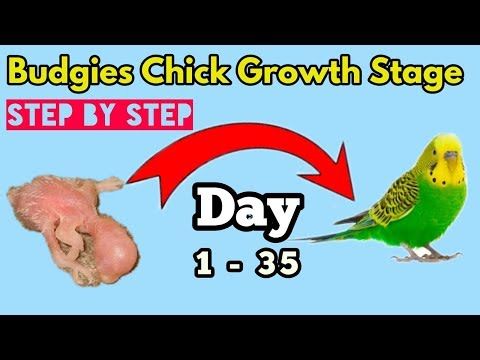 If you have the smallest chicks, then its diameter should not be more than 2.5 mm and it will be made of strong, soft material without sharp edges. nine0003 Photo: Feeding injector
If you have the smallest chicks, then its diameter should not be more than 2.5 mm and it will be made of strong, soft material without sharp edges. nine0003 Photo: Feeding injector
You should get rid of the syringe, for this you need to glow the cap and carefully remove the needle, drill a little more hole in the nozzle and put on the tube. Wrap the thread tightly around the edge of the tube and nozzle from the syringe. With a factory syringe, you don’t have to suffer like that - everything is provided for in the design.
The catheter must be lowered into the crop to a sufficient depth - if it is not installed correctly, the feed may enter the bird's trachea, which will lead to its death.
Therefore, having decided to breed budgerigars, you should already have a feeding syringe available. nine0003
Baby budgerigar heating
Also, fledglings require additional heating, which you will have to take care of. Devices that breeders use to keep chicks or sick birds warm are called brooders. You can buy them or make your own.
You can buy them or make your own.
The main thing is to be guided by the temperature parameters, since as you grow, the temperature in the room where the parrot is located should decrease.
Chick from a few hours to 4 days - 36 - 36.5°C; 7 days - 34°С; 14 days - 31 - 31.5 ° C; Day 21 - 24°C. Next, the chicks are moved to a box, which is similar in size to a nest box, in such a room the parrots themselves will be able to heat each other. nine0003
If you are raising a single chick, keep it in the brooder until day 25, where you lower the temperature to 24°C. Humidity during this period is maintained at 60%, as during masonry.
There are several options for feeding chicks:
Ready mix. Babies need vitamins and nutrients as well as vital enzymes. Therefore, NutriBird A19, a specialized and balanced food for budgerigar chicks, is just right. The mixture must be diluted not boiled, but heated to 39°C with water. Depending on the age of the chick, you adjust the density of the paste. This is the breeder's most convenient feeding option and one of the best ways to give your chick everything it needs to develop a strong body.
Depending on the age of the chick, you adjust the density of the paste. This is the breeder's most convenient feeding option and one of the best ways to give your chick everything it needs to develop a strong body.
You can buy food for chicks - Padovan Baby Patee Universelle. Some breeders have successfully raised young on it.
Photo: parrots4lifeDonor bird. Professional breeders use donor birds. Using a catheter, they load a grain mixture into the goiter of a bird, which is later pulled out with a probe. This is an unsafe procedure, so only professionals use this method. The main plus is that the substance that is extracted from the goiter of a parrot is a guarantee that the chick will receive all the vital substances for development. nine0003
Malt milk. A mixture of germinated grains with egg. Malt is prepared from germinated grain, which is crushed and diluted in half with water. Then filter through a strainer and add to the mixture. You should end up with a paste at 39°C.
You should end up with a paste at 39°C.
Medical additive Mezim, Festal, etc. to the porridge. The difficulty lies only in the correct concentration and dilution of these enzymes. It is better to use them together with malt milk.
For power base baby budgerigar, you need to cook baby porridge without milk, sugar and salt: you can boil buckwheat, oatmeal or corn porridge. On the third day of the birth of a chick, you can add vegetable juices to its diet: carrot, beetroot and pumpkin. After the chicks are at least 10 days old, in addition to cereals, you can give a little apple, banana, pomegranate and fat-free cottage cheese.
When the chicks are 20 days old, you can switch them to syringe feeding without catheter or even spoon feeding. From these days, add sprouted grains to the diet (pre-crush into pieces). nine0003
At the age of 30-35 days, the chicks can switch to dry grain, earlier if there is someone nearby who can show them how. But don’t worry, you don’t need to teach this, the chicks successfully begin to taste the grains themselves when the time comes.
But don’t worry, you don’t need to teach this, the chicks successfully begin to taste the grains themselves when the time comes.
How often to feed budgerigar chicks
The smallest chicks should be fed every two hours, at night every 4 hours. Gradually, six feedings with a break for the night are enough for the parrots.
Photo: Dawnstar AustralisOn the 20th day of life, babies can eat 4 times a day, as they approach 35 days, 3 times will be enough for the chicks. nine0003
Babies start to squeak when they are hungry, and the owners, in addition to the feeding schedule, listen to the sounds coming from the cage.
If your older bird is sick, you may need to feed it more frequently.
It is impossible to overfeed a parrot. Do not let the porridge flow out of the beak.
Try feeding them with a spoon, little by little the chicks will get used to it. If among them the eldest is the first to start eating on his own, there will be a chance that he will become an example for the rest of the parrots. nine0003
nine0003
What to feed a baby budgerigar
Budgerigars are the most popular bird for home keeping. A variety of colors, a cheerful, playful disposition will give a good mood to any owner. Caring for them is not difficult, nutrition does not cause difficulties, but not everything is simple with chicks. The usual offspring of budgerigars is 3–12 babies hatched 18 days after laying eggs, subject to temperature conditions and maintaining the necessary air humidity. Occasionally, two chicks can hatch from one egg. First, the testicles hatch first. At hatching, the weight of the baby is about 1 gram. Every owner who decides to start breeding birds for the first time is worried about the question of how to feed not only an adult bird, but also small chicks. Proper care, maintenance, a competent diet are important for the health, long happy life of pets. nine0003
For a year, a pair of budgerigars can hatch offspring 4 times.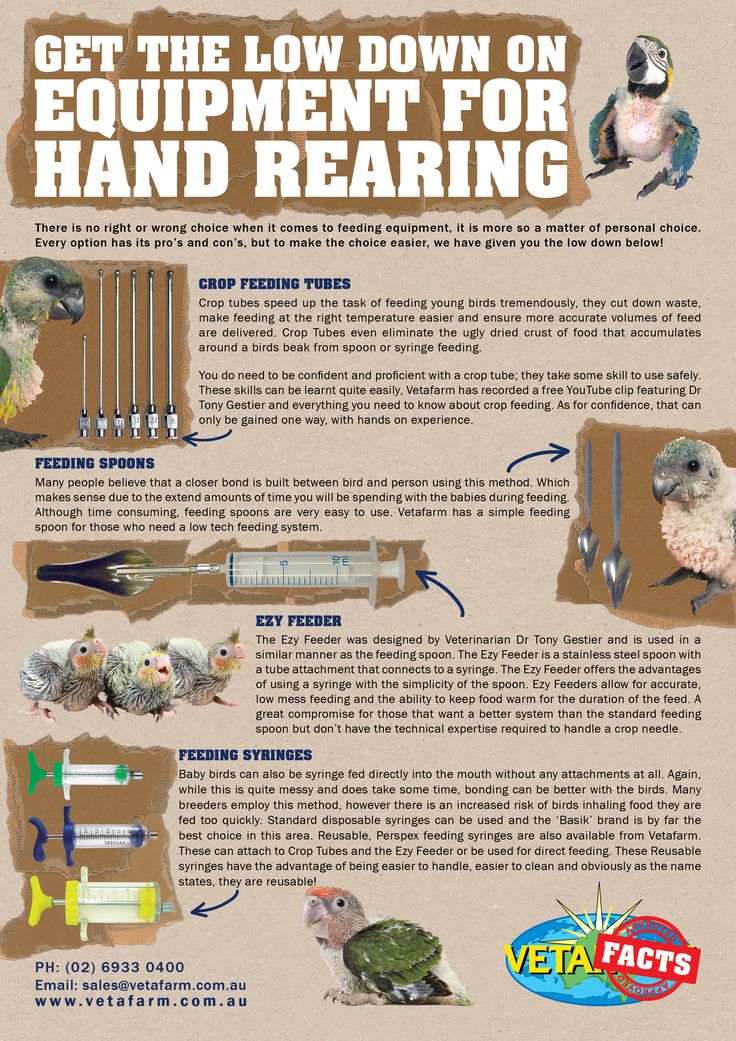 This should not be allowed: the body of the female is depleted.
This should not be allowed: the body of the female is depleted.
Small birds feed on a special substance in the form of a mucous mass mixed with almost liquid pieces of food and protein-rich milk produced in the mother's goiter or muscular stomach. After two or three days, grain, partially digested in the goiter, is added to the milk.
With the birth of babies, they are defenseless, completely dependent on their parents. The female cares for, feeds the cubs from her beak, turning each one on its back, regardless of their number and timing of hatching. If the diet of the female contains a sufficient amount of germinated cereals, then the mixture for feeding babies is completely enough. Over time, the grown older birds receive grain food from the goiter, the remaining milk goes to the babies who hatched last. There are cases when, together with the mother, the father also feeds the offspring, in whose goiter grain processing also takes place. Intensive feeding of parrots provides them with all the necessary nutrients and enzymes that ensure the smooth functioning of the digestive tract. nine0003
Intensive feeding of parrots provides them with all the necessary nutrients and enzymes that ensure the smooth functioning of the digestive tract. nine0003
The owner of parrots must provide a full menu to parents, changing the diet in a timely manner. It is recommended to constantly add egg mixture, sprouted grains, greens to food.
After leaving the nest, the babies go completely under the care of the male, while the mother is preparing for the next clutch at this time. The feeding period lasts 1.5 months, after which the young become independent from their parents, begin to feed on their own. nine0003
Artificial feeding
Sometimes there are situations when the female abandons her children, and the role of the parents of the parrots has to be performed by the owners themselves, feeding without the help of the real father and mother.
It is important to know: if a newly hatched chick does not eat for more than 12 hours, it may die.

Reasons for switching to artificial nutrition at home:
- large offspring, parents are unable to provide food for all children; nine0026
- female aggression, refusal to feed the cubs. Why this happens is difficult to answer. Perhaps she does not have or has not yet awakened maternal instinct. Maybe the reason was that you took a barely born chick in your arms or some other shock for the parrot;
- the baby loses his appetite, and he is not able to eat on his own;
- quarantine or sickness of the baby, requiring the separation of the diseased parrot from other birds for the duration of treatment; nine0026
- death of parents;
- the female is ready to produce the next clutch, the offspring becomes a hindrance to her.
Important to know : food deprivation of a barely born chick for more than 12 hours is critical, can cause death. It is necessary to remember this period and have time to prepare food. Sometimes the remaining one chick can be planted with an outside pair of parrots or another bird species. They will become foster parents to the baby, although the chance of survival of the chick is reduced; otherwise, you should take care of feeding the owner of the birds himself. The best candidates for this role will be Japanese finches, other types of parrots often refuse to accept a stranger, they can injure or peck him. nine0003
It is necessary to remember this period and have time to prepare food. Sometimes the remaining one chick can be planted with an outside pair of parrots or another bird species. They will become foster parents to the baby, although the chance of survival of the chick is reduced; otherwise, you should take care of feeding the owner of the birds himself. The best candidates for this role will be Japanese finches, other types of parrots often refuse to accept a stranger, they can injure or peck him. nine0003
It is important for fledgling crumbs to maintain optimal temperature and humidity. To do this, periodically spray the nest with clean water. The temperature in it must be maintained at 33 ° C, lower or higher will cause the death of birds. The process can be organized using a cardboard box, constantly warming up its bottom. You can put a warm towel, use an incubator with a set mode that is optimal for chicks. From the twenty-first day, thermoregulation of young animals is improving, additional heating is not required. nine0003
nine0003
Most experienced breeders advise feeding babies lightly watered down baby food heated to 37°C.
A chick who is two days old is given food using an ordinary insulin syringe or a catheter (cannula) attached to it, made of a plastic tube, wound with a thread. It is necessary to advance the tip further, preventing food from entering the trachea and choking the crumbs. If the bird is not weakened, it immediately begins to swallow food from the first drop. You need to feed until full saturation every two hours, even at night. Such food is given no more than 2 days - it is not intended for long-term feeding of chicks. Remains of food that have stuck to the baby's beak should be washed off with a decoction of chamomile, preventing the growth of bacteria and parasites. In small birds, food sometimes gets stuck in the beak, leading to cracks, you need to remove the remnants of food with a toothpick. Sometimes female parrots do not clean the paws of their babies, they accumulate leftover food, droppings, which harden during accumulation. In this case, you will have to wash the crumbs yourself. nine0003
In this case, you will have to wash the crumbs yourself. nine0003
When artificially fed with a cannula, food is poured not into the beak, but into the goiter, this will prevent the chick from choking on the contents. You can prepare such a mixture: part of baby food, two parts of millet decoction, one part of oat decoction, part of a solution with glucose, vitamins, amino acids.
Foods
There are several types of feeding for newly hatched wavy.
Use of a donor bird
This method is used by experienced breeders who are professionally breeding birds. The grain mixture is fed into the goiter of the parrot through a catheter, from where it is sucked off with a probe in the digested form. A dangerous, but the most effective type of food for artificial people, while all the substances necessary for life will enter the feathered body. nine0003
Malt milk feeding
Malt is prepared from sprouted grains, crushed, filtered, mixed with water, egg until a paste-like consistency is obtained. Feed warmed up to 39 °C. At a lower temperature, the mixture is not absorbed, it begins to ferment in the goiter, the bird dies of hunger. Higher food temperatures cause burns.
Feed warmed up to 39 °C. At a lower temperature, the mixture is not absorbed, it begins to ferment in the goiter, the bird dies of hunger. Higher food temperatures cause burns.
Enzyme porridges
You can feed the wavy with porridge, mixing mezim or festal. The exact dosage of the preparations must be observed, preferably with malted milk. nine0003
Formula feeding
The most convenient way to feed the chicks. Special branded balanced ready-made feeds of good quality, for example, NutriBird A19 and A21, are diluted with warm water to the required density, taking into account the age of the young, fed to babies. With this daily diet, the birds receive the necessary components: lactobacilli, enzymes, nutrients for health and growth, similar to those produced by the mother's goiter.
Dairy-free cereals
Buckwheat, oatmeal or corn porridge are cooked without milk, salt and sugar. You can feed the birds with dairy-free rice porridge. From the third day of life, the menu includes vegetable juices from carrots, pumpkins or beets. You can add a piece of egg yolk rubbed through a sieve. From the tenth day, fruits are mixed in: banana, apple, low-fat cottage cheese.
You can add a piece of egg yolk rubbed through a sieve. From the tenth day, fruits are mixed in: banana, apple, low-fat cottage cheese.
On the twentieth day, they begin to feed a small bird from a spoon, try self-feeding, offering a crushed sprouted grain to a budgerigar. nine0003
From the age of thirty, they begin to introduce whole grains. Even if there is no one to show how to eat it, after a while the chicks will learn to peck themselves.
Water
When feeding birds with liquid cereals and mixtures, there is no need for water, with the exception of hot days. Over time, when the bird grows up and begins to feed on its own, clean filtered water should be constantly in the drinker.
How often to feed
Barely hatched wavy are fed every two hours, the night interval between meals is 4 hours. Gradually bring the food up to six times. From the twentieth day they give food 4 times. A chick who is 1 month old is transferred to three meals a day. You should listen to the sounds coming from the cage - hungry birds remind you of themselves with a squeak. Starting from the 21st day of life, parrots, overgrown with plumage, are fed strictly observing the regimen, sometimes doing it by force - they stop voicing when they get hungry. nine0003
You should listen to the sounds coming from the cage - hungry birds remind you of themselves with a squeak. Starting from the 21st day of life, parrots, overgrown with plumage, are fed strictly observing the regimen, sometimes doing it by force - they stop voicing when they get hungry. nine0003
A sick adult parrot is fed more often.
It is necessary to give food to the feathered carefully, try not to oversaturate, take your time, watch that the food does not flow out of the beak. It is better to teach to eat from a spoon. Be patient - it won't work right away. At the same time, it is worth learning to eat only one chick on your own - the rest will follow its example. It is recommended to keep the syringe on hand for now - the parrot may be malnourished.
Tips for beginner ornithologists
In order for artificial nutrition to cause fewer problems, you should follow some tips:
- Single portion of food for wavy from 3 to 5 ml, no more cooking: food turns sour, causes digestive disorders.

- There is no need to supplement the birds with water: diluted mixtures contain a sufficient amount of liquid.
- From the age of seven, fruit juices are introduced into the diet: thanks to them, immunity is strengthened, growth is accelerated. nine0026
- In the cage, mineral feed is required for the correct formation of the bird's skeleton. You can give coarsely grated chalk or eggshells. A lack or excess of minerals disrupts development, growth, and sometimes leads to disease and even death.
- Grain mixtures are introduced from the moment the birds start sitting on the poles or perching on the owner's finger. Semi-liquid or thick porridge is cooked, offering a choice.
With proper care and feeding, the life of your pets will be long, happy, full. Having studied all the recommendations, tips, you can save the life of a little chick. You can be sure that artificially fed birds are more tame and trainable, they start talking better and faster than those raised in a nest with their family.


 By doing this you will be able to keep an eye out for potential problems which often start showing in weight loss, and you can make sure each chick is getting the amount of food they individually need.
By doing this you will be able to keep an eye out for potential problems which often start showing in weight loss, and you can make sure each chick is getting the amount of food they individually need.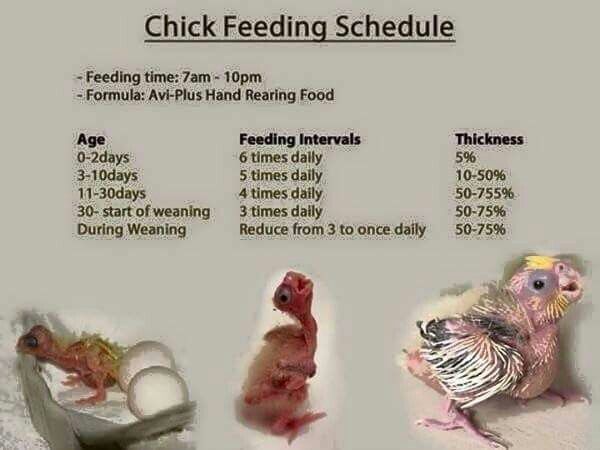 It is during this time that you can start introducing things for the chicks to experement with progressivly, depending on their age and whether they are in the nursery boxes or weaning cages.
It is during this time that you can start introducing things for the chicks to experement with progressivly, depending on their age and whether they are in the nursery boxes or weaning cages. These little ones have their own idea of what they would like to do, and are content to keep having us feed them 3 times a day longer than
These little ones have their own idea of what they would like to do, and are content to keep having us feed them 3 times a day longer than 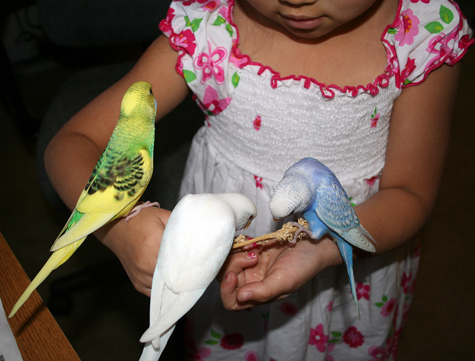 During these few additional weeks it is essential to to continue working on bonding and trust so as to not loose some of the advantage of hand feeding.
During these few additional weeks it is essential to to continue working on bonding and trust so as to not loose some of the advantage of hand feeding. 
 With this in mind you can keep an eye out for any unusual behavior or symptoms.
With this in mind you can keep an eye out for any unusual behavior or symptoms.